- Home
- slideshows
- miscellaneous
- Some of the jobs most at risk for suicide and depression are the most important to society. Here's a rundown of mental-health risks for doctors, childcare workers, first responders, and more.
Some of the jobs most at risk for suicide and depression are the most important to society. Here's a rundown of mental-health risks for doctors, childcare workers, first responders, and more.
Suicide rates among veterinarians have been rising for the last three decades.

Emergency medical technicians, including firefighters and paramedics, have a higher rate of of suicide than the general population.
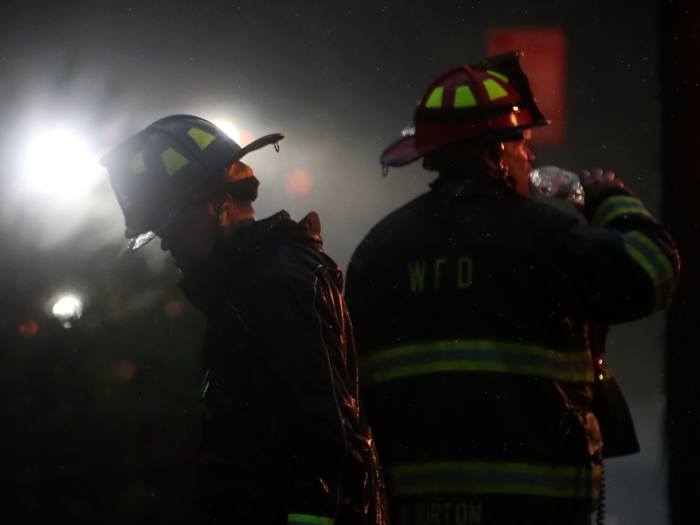
One recent study compared causes of death for EMTs to the general population, and found that 5.2% of deaths among EMTs between 2009 and 2015 were from suicide, more than double the 2.2% share of suicide deaths among non-EMTs.
The researchers attributed the higher rate of suicide to chronic on-the-job stress and substance abuse. A study published by researchers at Florida State University in 2009 found as many as 40% of EMTs could suffer from high-risk drug and alcohol use.
On top of on-the-job stress, MONEY Magazine's Kristen Bahler reported many first responders juggle multiple jobs to make ends meet. Bahler found being an EMT is one of the lowest-paying medical jobs, earning about 30% less per year than the average American worker as of 2018.
Construction workers have some of the highest rates of suicide among the entire US working population.
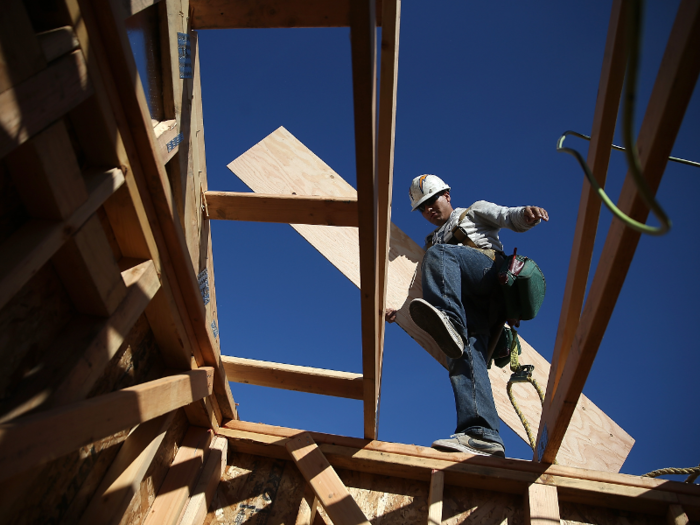
Among the US male working population, men working in construction had the highest rate of suicide in 2012 and 2015, according to the Center for Disease Control and Prevention.
Seventeen percent of construction workers also qualify as "heavy drinkers," defined as drinking five or more drinks at once on five or more days in the past month — the second highest rate among all occupational groups.
A survey published in the Journal of Construction Engineering and Management found fears about job security and little time to spend with family are some of the factors that contribute to construction workers' poor mental health.
Fear of on-the-job injury might also play a role, as construction deaths are skyrocketing in cities like New York. One in five worker deaths in 2017 were in construction, according to the Department of Labor.
Childcare workers, particularly those who earn low wages, have significantly higher rates of depression than the overall population.

Forty percent of early care and education workers suffer from clinical depression, according to a 2018 study done by public health scholars at the University of Washington. The depression rate among these workers amounts to double that of low-income women overall, and four times the rate of the general female population, study author Heather Hill told the Seattle NPR affiliate.
The Bureau of Labor Statistics reports that the US employs about 1.1 million childcare workers as of 2018. The average wage for childcare workers is about $11 an hour.
Male doctors are 40% more likely to die from suicide than the general public.
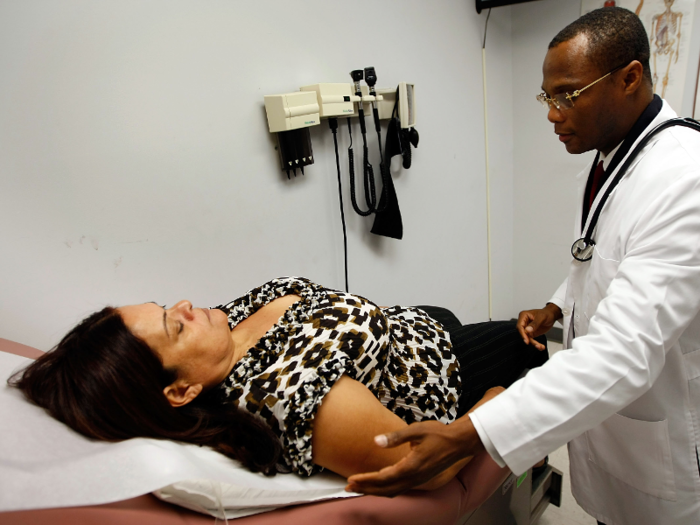
Being a physician is a taxing job. An October 2019 report from the National Academy of Medicine found that between 35% and 54% of nurses and doctors have symptoms of burnout. Causes include unmanageable workloads, inadequate technology, and a lack of social support.
A May 2019 report published by the Canadian Medical Association Journal found that "compared with non-physicians, male physicians are 40% more likely to die by suicide" and "the risk to female physicians is more than doubled."
Nurses have higher rates of suicide than the general US population.
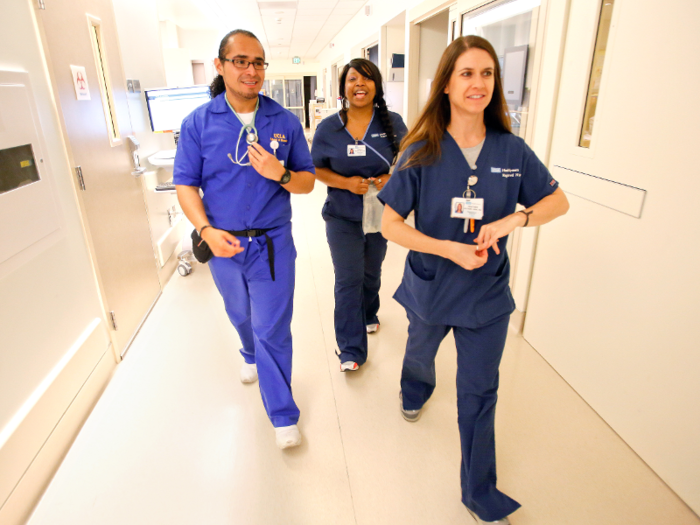
Researchers from the University of California at San Diego recently conducted what they said is the first nationwide investigation into nurse suicides in more than 20 years. Their findings, published in October 2019, show that both male and female nurses had higher rates of suicide than men and women respectively in the US.
The study found that the suicide incidence rate for female nurses was about 58% higher than the general female population, and the rate for male nurses was about 41% higher than among the general male population.
For nurses, hardships on the job include long hours because of nationwide worker shortages, along with dealing with physical and verbal abuse at work.
Restaurant workers have stressful, long schedules, and the industry has a high rate of alcoholism.

According to the National Restaurant Association, restaurants in the US make up an $863 billion dollar industry with 15.3 million employees.
Katy McLaughlin and Natalia V. Osipova at The Wall Street Journal report that the restaurant industry "has one of the highest rates of illicit drug use and alcoholism and a tradition of masking mental-health struggles." The Journal also cited David Ballard of the American Psychological Association, who says the industry's combination of demanding work, constant stress, and lack of health insurance contribute to mental health issues.
After celebrity chef Anthony Bourdain's death from suicide in June 2018, UnitedHealthcare and the National Restaurant Association started offering a partnership health plan to restaurant workers that covers mental health.
Humanitarian workers are exposed to traumatic situations in struggling countries, which can lead to increased anxiety and depression.
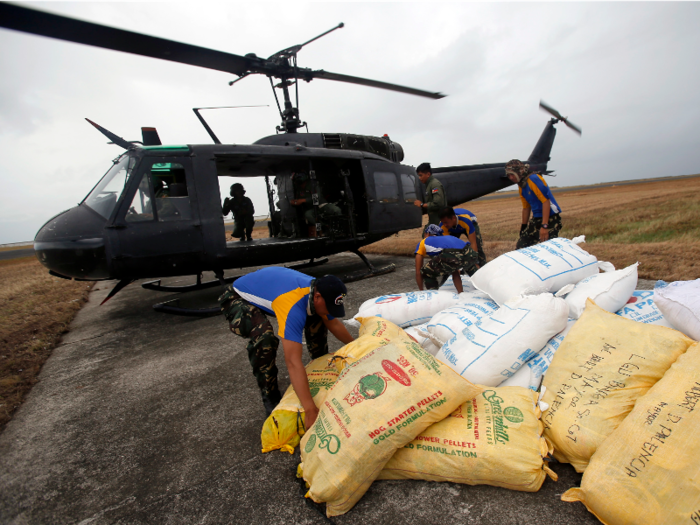
Humanitarian workers bring aid to countries in crisis stemming from natural disasters, war, or any other events that leave civilians without resources. The job is taxing both physically and mentally.
An October 2018 report reviewed and approved by the Research Ethics Committee of Queen Margaret University, Edinburgh found that "humanitarian workers in South Sudan experience substantial levels of mental ill-health" as workers experience "chronic stress exposure" on the job.
Columbia's Mailman School of Public Health published a study in 2012 that found humanitarian workers experience more anxiety and depression after starting their jobs. Of the 212 workers surveyed at 19 NGOs, just 3.8% of workers reported anxiety pre-deployment and 11.8% reported anxiety post-deployment. As for depression, 10.4% of workers reported experiencing symptoms of depression pre-deployment and 19.4% reported symptoms of depression post-deployment.
Lawyers are particularly prone to burnout because of the perfectionism that makes them successful in the first place.
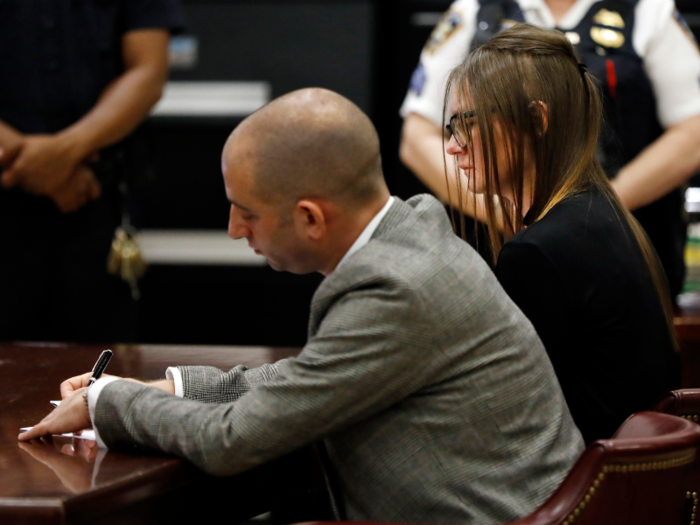
Dan Lukasik is a lawyer and the director of the Workplace Well-Being for Mental Health Association. As an advocate for the mental health of lawyers, Lukasik wrote an August 2018 post about burnout and depression in the field of law. He identifies burnout as a result of intense schedules and the perfectionism typical of lawyers.
A 2016 study by Hazelden Betty Ford Foundation and ABA Commission on Lawyer Assistance Programs surveyed nearly 13,00 licensed, employed attorneys and found that 20.6% of those lawyers screened positive for "hazardous, harmful, and potentially alcohol-depending drinking," 28% were experiencing depression, 19% were experiencing anxiety, and 23% were experiencing stress.
Popular Right Now
Popular Keywords
Advertisement